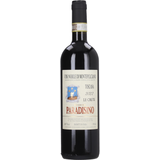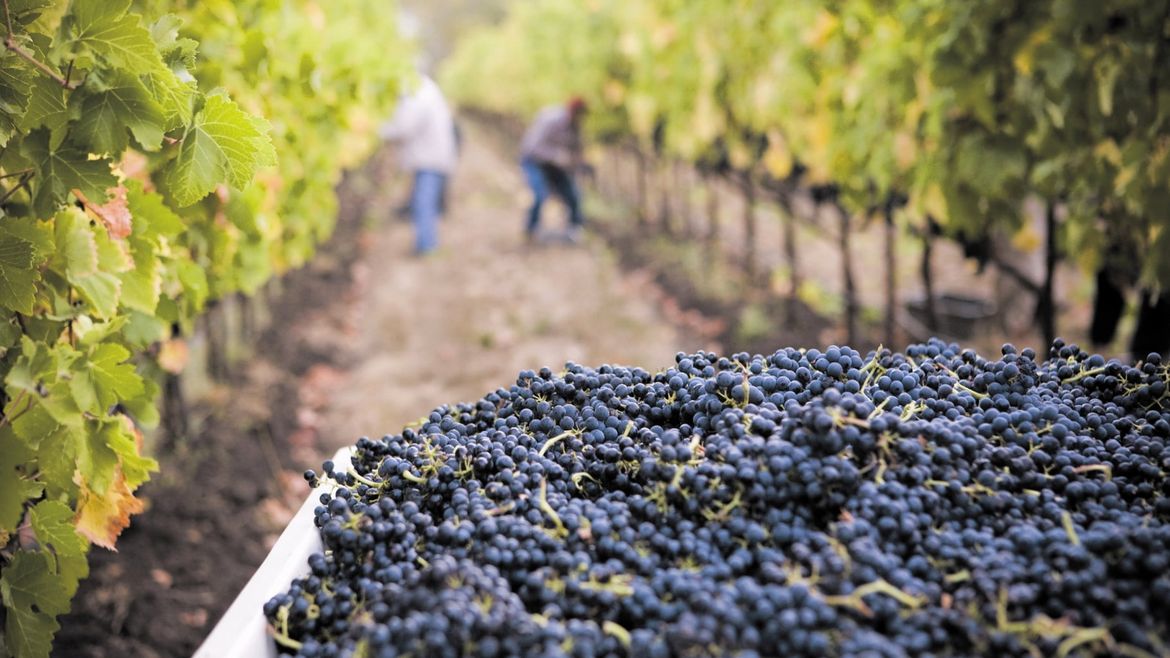DAC Areas in Austria
Weinviertel, Leithaberg, Kremstal & Co.
Anyone who has ever browsed a wine shop has probably noticed the abbreviation "DAC". But what does DAC actually mean and what does it say about the wines that bear this name? We have wines from the DAC regions and the answers to these questions.
What does DAC actually stand for?
The abbreviation DAC stands for "Districtus Austriae Controllatus". The term refers to a region's Qualitätsweine (high-quality wines) and is accordingly, for many wine lovers, an indicator of a great bottle. With the introduction of the DAC system in 2002, the aim was to combine wines typical of a region under one brand.
Of course, not every wine can fall under the DAC standard. In order to be allowed to sell it with this name affixed, DAC wines must have special characteristics representing the growing area and the region. After an extensive review, the award can be given to a wine. There are predefined regulations that Qualitätsweine must meet. Above all, the winemakers must keep an eye on the following DA characteristics: The character of the area, the alcohol content of the wine and the age from which it can be sold. In Austria, there are currently 15 DAC areas in Lower Austria, Styria, Vienna and Burgenland.
The DAC areas in Austria at a glance:
- Weinviertel DAC:
In 2002, the Weinviertel was the first region to become a DAC area. Peppery-spicy Grüner Veltliner dominates here.
- Neusiedlersee DAC:
One of Austria's most popular grape varieties is located in the Pannonian DAC region. Fruity Zweigelt is grown on 1,812 hectares.
- Vulkanland Steiermark DAC, Südsteiermark DAC, Weststeiermark DAC:
Styria has had a new system since the 2018 vintage. The structure of their three new DAC regions relates to three important Styrian wine-growing regions. The DAC system also establishes a three-tier pyramid of origin, which is divided into regional wines (Gebietsweine), village wines (Ortsweine) and vineyard wines (Riedenweine).
- Kamptal DAC:
In the volcanic region of Kamptal, white wines dominate, with a dense structure and mineral character.
- Leithaberg DAC:
Spice, fruit and energy - this is what distinguishes Leithaberg DAC wines. The best-known grape varieties in the region include Blaufränkisch, Grüner Veltliner, Pinot Blanc and Chardonnay.
- Kremstal DAC:
The area has had the DAC title since 2007. Grüner Veltliner and Riesling are the main grapes here.
- Mittelburgenland DAC:
Central Burgenland is known for its Blaufränkisch or "Kekfrankos". The area has had the DAC designation since 2005.
- Traisental DAC:
The typical grape varieties in this region are Grüner Veltliner and Riesling.
- Wiener Gemischter Satz DAC:
Wine production in Vienna? Of course! The rule is that the wine should come from a Viennese vineyard, which must consist of three white grape varieties.
- Eisenberg DAC:
Many immediately associate minerally red wines with the Eisenberg DAC. No wonder, as Blaufränkisch is a figurehead for this area.
- Rosalia DAC:
In the foreground of the cultivated grape varieties is Blaufränkisch. 60% of the DAC wine region is Blaufränkisch and 40% Zweigelt. Strong wines with fruity and spicy notes come from this region.
- Carnuntum DAC
This area, with around 906 hectares of vineyards, got its name from the ancient legionary camp and the Roman city of Carnuntum. Heavy clay and loess soils offer ideal conditions for viticulture. Characteristic red wines made from Zweigelt and Blaufränkisch, as well as white wines from Chardonnay, Weissburgunder and Grüner Veltliner, are typical of the region.
- Wachau DAC
The Wachau is a World Heritage Site and is one of the most fascinating wine-growing regions Austria has to offer. Grüner Veltliner and Riesling, which are often among the best white wines in the world, are mainly grown on 1,344 hectares of vineyards. From the 2020 vintage onwards, the unmistakable Wachau wines can be labelled with the protected designation "Wachau DAC". This quality designation stands for a unique combination of ideal soil conditions, a favourable climate and the best winemaking craft. Wines with the designation "DAC Wachau" may only be picked by hand.
Learned enough about DAC areas? Now it's time to try the wines!
Latest reviews
-
 3.5 (2)
3.5 (2)Clos Montblanc Masia les Comes Reserva 2017 Bio, 0,75 L
- Organic cuvée from Cabernet Sauvignon & Merlot
- 18 months barrique, now ideally matured
- Cassis, leather, roasted flavours & a hint of liquorice
€ 21,99 (€ 29,32 / L)Delivery by January 05
-
-
 4.0 (1)
4.0 (1)Pasqua Desire Lush &Zin, Primitivo Puglia IGP 2024, 0,75 L
- Intensely fruity red wine from Apulia
- Dark, powerful, with some residual sweetness
- Great companion for pizzas & burgers
€ 12,99 (€ 17,32 / L)Delivery by January 05
-
-
 4.0 (1)
4.0 (1)Podere Paradisino Le Crete Vino Nobile di Montepulciano 2022 DOCG, 0,75 L
- Traditional ageing over 24 months in wood
- Pure Sangiovese from Prugnolo-Gentile grapes
- Red berries, fine herbal spice and vibrant acidity
€ 20,99 (€ 27,99 / L)Delivery by January 05
-
-
 3.7 (9)
3.7 (9)Superwine OMG it's white, organic , 0,75 L
- 100% organic pecorino from Abruzzo, Italy
- Light, fruity and very accessible
- Elicits an "Oh my God" reaction
€ 9,99 (€ 13,32 / L)Delivery by January 05
-
Magazine Articles:
Discover 9wines Online:
-
Austria: Free standard delivery from € 49,90
-
We operate in a
climate-conscious manner. -
Free
returns Secure payments
with SSL encryption technology






